Rhetoric: 2,000 Years of Powerful Persuasion
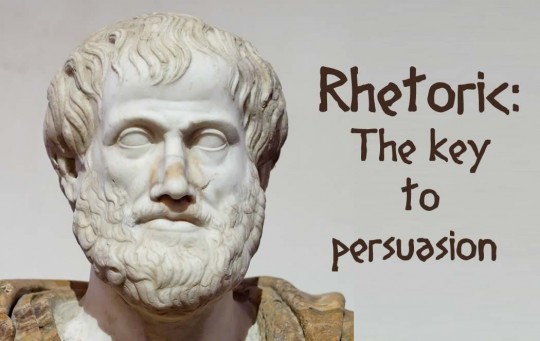
Guest article by Gavin McMahon
In many ways, rhetoric is neuroscience’s older, wordier brother. The one that never got a college degree.
Neuroscience did go to college. He’s got one of those advanced ‘ology degrees. But he’s a young whippersnapper compared to rhetoric. Neuroscience first came onto the stage just 50 years ago. Rhetoric dates back thousands of years to the Roman forum and the Greek agora. Neuroscience has quickly gained a reputation. Working in marketing and business, while rhetoric has lost its way.
If it’s remembered today, rhetoric is a dusty classics class, or empty political bluster. Yet rhetoric is all around us, and just as persuasive as ever. Michael Erard, linguist & author, points out the problem with rhetoric. It is “sorely in need of a usability upgrade.”
We’re working on that upgrade. Dirty Rhetoric is a project to bring tried and true rhetorical techniques to a wider audience.
Rhetoric is everywhere. Look at any advertising campaign, piece of persuasive copy, or good sales presentation. You will see and hear rhetoric at work.
Here are five pieces of ‘found’ rhetoric.
Foresound and Backsound
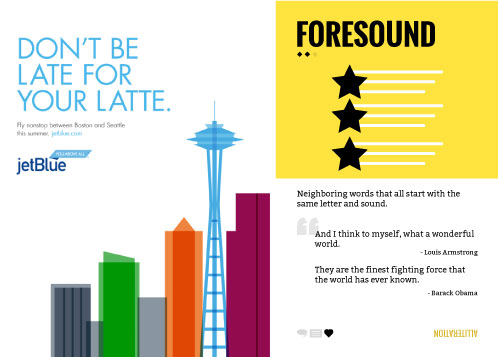
[Note: Dirty Rhetoric cards are available at http://dirtyrhetoric.com]
Here’s an example from the copywriters at JetBlue. If you’ve seen any of their campaigns, you know they mix modern and fun. The line “Don’t be late for your latte” does exactly that. It’s a very simple rhetorical technique called Alliteration. In Dirty Rhetoric we call it Foresound. Neighbouring words that all start with the same letter and sound.
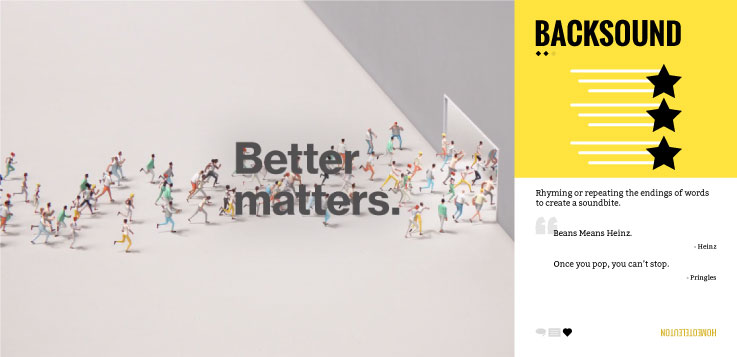
Here’s another rhyming example. What we call Backsound. In classical rhetoric it’s Homeoteleuton (pronounce that if you can). What the Greeks and Romans knew, McGlone & Tofighbakhsh confirmed in their paper, “Birds of a feather flock conjointly.” Rhyme has a strange effect on the brain. It makes sound bites sticky. Statements that have rhyming qualities appear more plausible.
Humanize
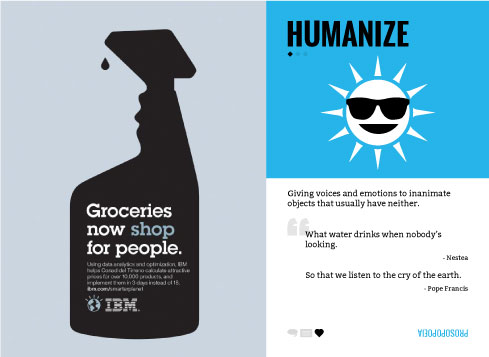
If you’ve strolled through an airport recently, you may have seen these ads from IBM. In this promotion for data analytics, the line used is, “Groceries now shop for people.” The groceries are humanized by giving them a human action to perform. It’s the almost unpronounceable rhetorical technique prosopopoeia, giving voices and emotions to inanimate objects. It’s a clever technique that makes you stop and think. Even better, it’s reflected visually. Look at the picture. See the fore/ ground gestalt of the human/ spray bottle?
Opposites
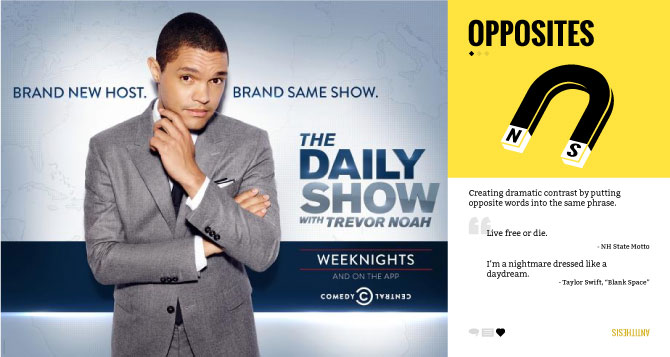
It’s a tricky job to fill the shoes of the great Jon Stewart. But Comedy Central are gamely taking it on. In this new Daily Show promotion they’re playing off the change with the line, “Brand new host. Brand same show.” Using the opposite words of new and same creates dramatic contrast. This rhetorical technique is antithesis.
Wordhack
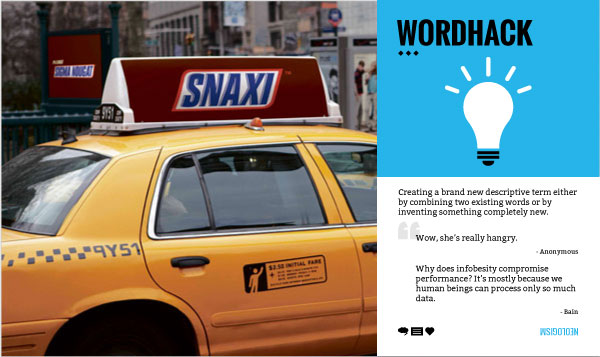
Wordhacking is in a lot of campaigns, not just in advertising but politics. Birther, Reaganomics, Islamophobia anyone? Here we see it on top of a new york taxi, adorned with the phrase, “Snaxi.” What makes this wordhack work is the context. The visuals — typography and color treatment — are pure Snickers. The placement is pure taxi. Put them together and you have a snaxi.
These rhetorical techniques play with the language (and visual) processing parts of our brain. Sometimes they make it fun, sometimes they make sticky sounds, sometimes they make the brain work a little harder. Whatever they do, two thousand years of practice says they work.
Rhetoric copy techniques work, says 2,000 years of practice. pic.twitter.com/hGAb3siqo1 Share on X
